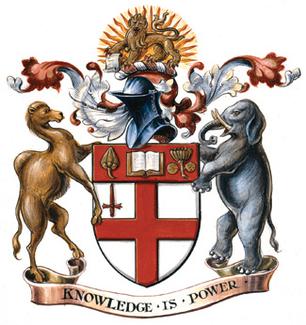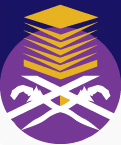Related Research Articles

Iran, also known as Persia and officially as the Islamic Republic of Iran, is a country located in West Asia. It is bordered by Iraq and Turkey to the west, by Azerbaijan and Armenia to the northwest, by the Caspian Sea and Turkmenistan to the north, by Afghanistan and Pakistan to the east, and by the Gulf of Oman and the Persian Gulf to the south. It covers an area of 1.64 million square kilometres, making it the 17th-largest country. With an estimated population of 86.8 million, Iran is the 17th-most populous country in the world, and the second largest in the Middle East. Its largest city is the capital Tehran, followed by Mashhad, Isfahan, Karaj, Shiraz, and Tabriz.

Singapore, officially the Republic of Singapore, is an island country and city-state in maritime Southeast Asia. It is located about one degree of latitude north of the equator, off the southern tip of the Malay Peninsula, bordering the Strait of Malacca to the west, the Singapore Strait to the south, the South China Sea to the east, and the Straits of Johor to the north. The country's territory comprises one main island, 63 satellite islands and islets, and one outlying islet; the combined area of these has increased by 25% since the country's independence as a result of extensive land reclamation projects. It has the third highest population density in the world, although there are numerous green and recreational spaces as a result of urban planning. With a multicultural population and in recognition of the cultural identities of the major ethnic groups within the nation, Singapore has four official languages – English, Malay, Mandarin, and Tamil. English is the lingua franca, with its exclusive use in numerous public services. Multi-racialism is enshrined in the constitution and continues to shape national policies in education, housing, and politics.

Iran's telecommunications industry is almost entirely state-owned, dominated by the Telecommunication Company of Iran (TCI). Fixed-line penetration in 2004 was relatively well-developed by regional standards, standing at 22 lines per 100 people, higher than Egypt with 14 and Saudi Arabia with 15, although behind the UAE with 27. Iran had more than 1 mobile phone per inhabitant by 2012.

The foreign relations of Iran are the economic and diplomatic relationships between the Iranian government and governments of other countries. Geography is a very significant factor in informing Iran's foreign policy. Following the 1979 Iranian Revolution, the newly formed Islamic Republic, under the leadership of Ayatollah Khomeini, dramatically reversed the pro-American foreign policy of the last Shah of Iran Mohammad Reza Pahlavi. Since then the country's policies have oscillated between the two opposing tendencies of revolutionary ardour to eliminate Western and non-Muslim influences while promoting the Islamic revolution abroad, and pragmatism, which would advance economic development and normalization of relations. Iran's bilateral dealings are accordingly sometimes confused and contradictory.

SOAS University of London is a public research university in London, England, and a member institution of the federal University of London. Founded in 1916, SOAS is located in the Bloomsbury area of central London.
Malaysia Airlines Berhad, formerly known as Malaysian Airline System, and branded as Malaysia Airlines, is the flag carrier of Malaysia and a member of the Oneworld airline alliance. The company headquarters are at Kuala Lumpur International Airport. In August 2014, the Malaysian government's sovereign wealth fund Khazanah Nasional—which then owned 69.37% of the airline—announced its intention to purchase the remaining ownership from minority shareholders and delist the airline from Malaysia's stock exchange, thereby renationalising the airline. It operates primarily from its main hub Kuala Lumpur International Airport to destinations throughout Asia, Oceania and Europe, as well as its secondary hub Kota Kinabalu International Airport to Taipei and Tokyo (Narita).

Swinburne University of Technology, is a public research university based in Melbourne, Australia. Its main campus is in Hawthorn, a suburb of Melbourne, 7.5 km from the Melbourne central business district.

Curtin University, formerly known as Curtin University of Technology and Western Australian Institute of Technology (WAIT), is an Australian public research university based in Bentley, Perth, Western Australia. It is named after John Curtin, Prime Minister of Australia from 1941 to 1945, and is the largest university in Western Australia, with 59,939 students in 2021.

Middle East Technical University is a public technical university located in Ankara, Turkey. The university emphasizes research and education in engineering and natural sciences, offering about 41 undergraduate programs within 5 faculties, 105 masters and 70 doctorate programs within 5 graduate schools. The main campus of METU spans an area of 11,100 acres (4,500 ha), comprising, in addition to academic and auxiliary facilities, a forest area of 7,500 acres (3,000 ha), and the natural Lake Eymir. METU has more than 120,000 alumni worldwide. The official language of instruction at METU is English.

University of East London (UEL) is a public university located in the London Borough of Newham, London, England, based at three campuses in Stratford and Docklands, following the opening of University Square Stratford in September 2013. The University of East London began as the West Ham Technical Institute and it was officially opened in October 1898 after approval was given for the construction of the site by the West Ham Technical Instruction Act Committee in 1892 following the Technical Instruction Act of 1889. It gained university status in 1992. It was formerly known as College of East London.
Asia is the largest and most populous continent and the birthplace of many religions including Buddhism, Christianity, Confucianism, Hinduism, Islam, Jainism, Judaism, Shinto, Sikhism, Taoism, and Zoroastrianism. All major religious traditions are practiced in the region and new forms are constantly emerging. Asia is noted for its diversity of culture.

The construction industry of Iran is divided into two main sections. The first is government infrastructure projects, which are central for the cement industry. The second is the housing industry. In recent years, the construction industry has been thriving due to an increase in national and international investment to the extent that it is now the largest in the Middle East region. The Central Bank of Iran indicate that 70 percent of the Iranians own homes, with huge amounts of idle money entering the housing market. Iran has three shopping malls among the largest shopping malls in the world. Iran Mall is the largest shopping mall in the world, located in Tehran. The annual turnover in the construction industry amounts to US$38.4 billion. The real estate sector contributed to 5% of GDP in 2008. Statistics from March 2004 to March 2005 put the number of total Iranian households at 15.1 million and the total number of dwelling units at 13.5 million, signifying a demand for at least 5.1 million dwelling units. Every year there is a need for 750,000 additional units as young couples embark on married life. At present, 2000 units are being built every day although this needs to increase to 2740 units. Iran's construction market will expand to $154.4 billion in 2016 from $88.7 billion in 2013.

The Iranian diaspora refers to Iranian people or those who are of Iranian ancestry living outside Iran.
Koreans in Indonesia numbered 78,676 individuals as of 2018, making them the 13th-largest population of overseas Koreans, according to South Korea's Ministry of Foreign Affairs. The number has increased significantly from previous record, which was around 50,000 people.

Iran has made considerable advances in science and technology through education and training, despite international sanctions in almost all aspects of research during the past 30 years. Iran's university population swelled from 100,000 in 1979 to 2 million in 2006. In recent years, the growth in Iran's scientific output is reported to be the fastest in the world.
Most expatriates in the United Arab Emirates reside in Dubai and the capital, Abu Dhabi. A number of immigrants settled in the country prior to independence. The UAE is home to over 200 nationalities. Emiratis constitute roughly 10% of the total population, making the UAE home to one of the world's highest percentage of expatriates. Indians and Pakistanis form the largest expatriate groups in the country, constituting 28% and 12% of the total population respectively. Around 510,000 Westerners live in the United Arab Emirates, making up 5.1% of its total population.

The MARA Technological University is a public university based primarily in Shah Alam, Selangor. It was established to help rural Malays in 1956 as the RIDA Training Centre, and opened with around 50 students. It has since grown into the largest institution of higher education in Malaysia as measured by physical infrastructure, faculty and staff, and student enrollment.
This is a list of Assyrian populations by country according to official and estimated numbers. Due to a lack of official data in many countries, estimates may vary.

The Islamic Republic of Iran and the Syrian Arab Republic are close strategic allies, and Iran has provided significant support for the Syrian government in the Syrian civil war, including logistical, technical and financial support, as well as training and some combat troops. Iran sees the survival of the Syrian government as being crucial to its regional interests. When the uprising developed into the Syrian Civil War, there were increasing reports of Iranian military support, and of Iranian training of the National Defence Forces both in Syria and Iran. From late 2011 and early 2012, Iran's IRGC began sending tens of thousands of Khomeinist militants in co-ordination with Assad regime to prevent the collapse of the Syrian Arab Army; thereby polarising the conflict along sectarian lines.

Liwa Fatemiyoun, literally "Fatimid Banner", also known as Fatemiyoun Division or Fatemiyoun Brigade, is an Afghan Shia militia formed in 2014 to fight in Syria on the side of the Syrian government. The group's officially designated purpose, is the defense of the shrine of Zaynab bint Ali, and to fight "takfiri terrorists" in Syria, which would come to include the Islamic State (IS). It is funded, trained, and equipped by the Islamic Revolutionary Guard Corps (IRGC), and fights under the command of Iranian officers. Both the Fatemiyoun Brigade and the Iranian government downplay their relationship with one another, despite clear coordination and the brigade's operation under the auspices of the IRGC. Liwa Fatemiyoun is also closely associated with Hezbollah Afghanistan.
References
- 1 2 Christoph Marcinkowski (15 July 2013). "The Iranian Shi'i Diaspora in Malaysia". Middle East Institute . Retrieved 19 August 2015.
- ↑ Vijenthi Nair (11 June 2011). "Iranians feeling at home in Malaysia". The Star . Archived from the original on 19 January 2016. Retrieved 19 August 2015.
- ↑ John Krich (31 August 2011). "Iranian Exiles Flock East, to Multiethnic Malaysia". Time . Retrieved 19 August 2015.
- ↑ Melissa Chi (26 October 2011). "Malaysia, the perfect bridge for Iranians to escape home". The Malaysian Insider. Archived from the original on 4 March 2016. Retrieved 19 August 2015.